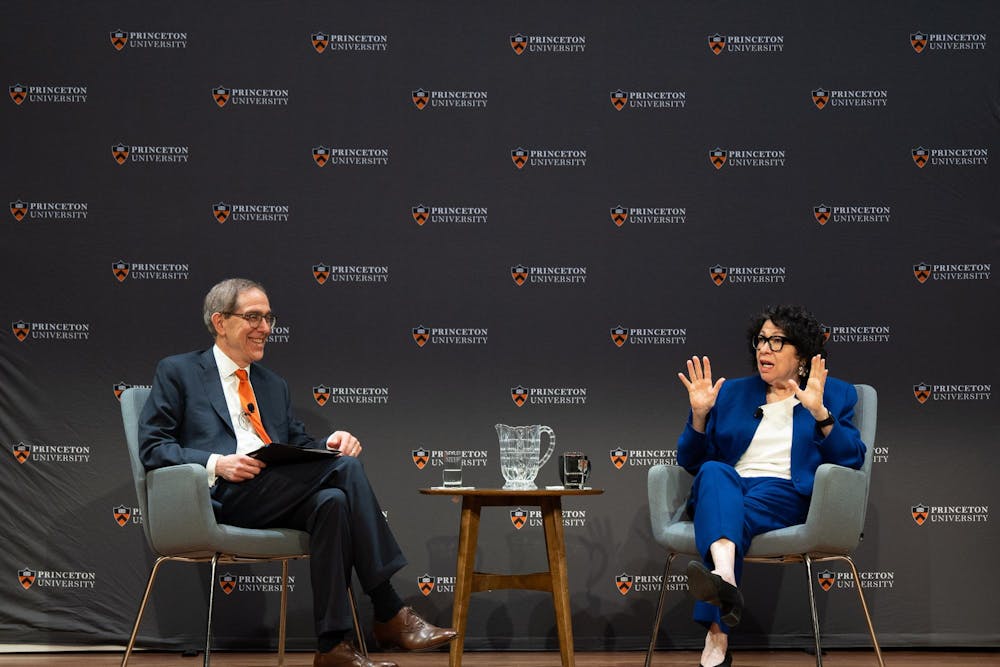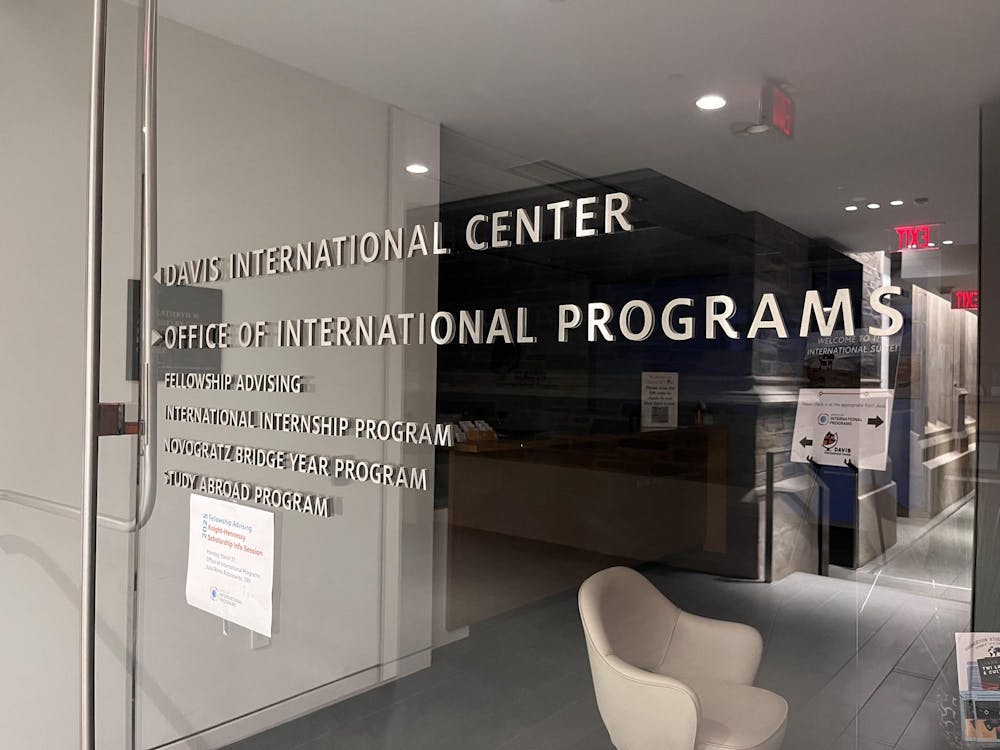Associate Justice of the Supreme Court of the United States Sonia Sotomayor ’76 sat down for an hour-long conversation with President Christopher Eisgruber ’83 in front of approximately 900 students in Richardson Auditorium on Friday. The talk was held as part of her return to campus, prompted by the dedication of 36 University Place in her name.
Throughout the event, Sotomayor responded to pre-screened questions from both undergraduate and graduate students and spoke on her life at Princeton, as well as the current “tumultuous state” of America while serving on the Supreme Court. She also repeatedly interrupted the talk to take photos with students in the audience who had submitted questions. Following the talk, the unveiling of a portrait of Justice Sotomayor and a ribbon cutting to commemorate Sonia Sotomayor Hall took place at a private ceremony in Chancellor Green.
The Justice was on campus for the dedication of Sonia Sotomayor Hall, formerly known as 36 University Place. In the announcement regarding the renaming, Eisgruber described Sotomayor as a “trailblazing student, a loyal alumnus, a University trustee, and an extraordinary jurist.”
Sonia Sotomayor Hall houses the Emma Bloomberg Center for Access and Opportunity, the Center for Career Development, and the Admissions Information Center, along with a location of the U-Store.
Sotomayor made a nod to the campus expanding and the changing composition of the student body.
“This was still an old boys’ playground and that has thankfully changed,” she said, noting that “the place has grown, it’s developed and it’s grown into a multicultural, multidimensional institution.”
She recounted how her first Princeton roommate, upon learning that she would be sharing a room with a Puerto Rican girl from the South Bronx, pictured her to be “a tough gal with a Leslie jacket, and possibly a knife in her pocket.”
Sotomayor urged the Princeton audience not to rely on her opinion, and instead to educate themselves, often encouraging students who asked her questions to reflect more deeply before offering advice.

“You want to ask me the question then you haven’t gone on out to learn enough about the issue you’re asking me about, because it should be your opinion that matters,” she said.
Sotomayor noted that like most SCOTUS justices, she prefers to not give her opinion on political issues, particularly those tied to cases that are before the Court or are likely to come before the Court, because she wants to remain open to all perspectives.
“I have opinions about many areas of the law, but I do believe that when people come into the courtroom that they want to believe, and should believe, that I am keeping an open mind,” she said.
But Sotomayor also urged the audience to take action when they see laws they believe should be changed.

“It is an investment of time and energy and passion to get our American experiment right,” she said. “Right now, we’re in a tumultuous state, and one that’s going to require a great effort from us as a nation to figure out what path we’re going down and if it is the path that we want as a collective.”
She noted that the public tends to respond more to “sound bites” and “bottom lines” rather than “pay[ing] attention to reason.” Particularly for lawyers and judges, she emphasized a willingness to be curious and to not make promises that could not be kept, as “the impressions will last forever.”
“If you are curious about the world and about people, about their nature and our relationships to one another, what makes us and the world tick, then you’ll be a successful lawyer, and I think you’ll be an even better judge,” she said.
A few hours after her talk with Eisgruber, a ribbon-cutting and portrait unveiling ceremony was held for Sotomayor at the Chancellor Green Rotunda, which was attended by trustees, faculty members, and alumni. The Justice offered some remarks to the audience before officially cutting the ribbon for Sonia Sotomayor Hall and unveiling the portrait of her by Australian artist Paul Newton.

After the talk with Eisgruber, a ribbon-cutting and portrait unveiling ceremony was held for Sotomayor at the Chancellor Green Rotunda.
Calvin Grover / The Daily Princetonian
Sotomayor thanked the Princeton community for honoring her, saying that she was “deeply touched to have [her] name become a permanent part of Princeton.”
Sotomayor was a part of the class of 1976, the fourth graduating Princeton class to include women who had matriculated as first years, made up of 28 percent women. Comparatively, women make up 51% of the most recently matriculated class of 2028.
Sotomayor said that in contrast to the halls at Princeton during her time on campus, which were all named after “men who contributed historically and financially to Princeton,” she hoped “students will learn a little about the improbabilities of my life story and carry forward a new sense of all that is possible.”
Justus Wilhoit is a head Audience editor and senior News writer for the ‘Prince.’ He is from Kenosha, Wis. and typically covers Princeton’s eating clubs and co-ops, identity and student life, and the Trump administration.
Leela Hensler is a staff News writer and Sports contributor for the ‘Prince.’
Please direct any corrections to corrections[at]dailyprincetonian.com
Correction: A previous version of this article said that the class of 1976 was the third to include women. In fact, it was the fourth class year to include women who had matriculated as first-years. The classes of 1970 to 1972 included women who had transferred to Princeton.








